Melanoma
Understanding Melanoma: The Most Dangerous Type of Skin Cancer
Melanoma is a dangerous type of skin cancer that occurs in melanocytes, the cells responsible for producing the skin pigment known as melanin. While melanocytes are primarily found in the skin, they also exist in the bowel, eyes, and other parts of the body; however, the risk of melanoma in these areas is considerably lower compared to the skin.
The Deadly Nature of Melanoma
While melanoma is less common than other forms of skin cancer, it is the deadliest, accounting for approximately 75% of all skin cancer deaths. In the United States alone, about 160,000 new melanoma cases are diagnosed each year. Excessive exposure to ultraviolet (UV) light significantly increases the risk of developing melanoma, emphasizing the importance of sun protection.
The Importance of Regular Skin Checks
Regular skin checks by a dermatologist are crucial in detecting melanoma early. Dermatologists have the expertise to identify suspicious moles, lesions, or changes in the skin that might indicate melanoma. Equally important are self-exams, where individuals monitor their skin for any changes in moles' shape, size, color, or the appearance of new spots.
Combining Professional and Self-Examinations
By combining professional evaluations with self-examinations, early detection of melanoma becomes more likely. Timely intervention significantly improves the chances of successful treatment and better outcomes. This underscores the importance of regular checks by dermatologists and self-exams for everyone's overall skin health.
Our Commitment to Your Skin Health at Westerville Dermatology
Your skin health is our top priority at Westerville Dermatology. Our expert providers are dedicated to caring for you and your loved ones throughout your skin wellness journey. We offer comprehensive skin examinations and the latest treatments to ensure the best possible outcomes.Expert Care: Our dermatologists specialize in the early detection and treatment of melanoma.
Comprehensive Exams: We provide thorough skin checks to monitor for any signs of melanoma.
Patient Education: We prioritize educating our patients about melanoma prevention and early detection.
Protect your skin and ensure your peace of mind with regular check-ups. Schedule your skin examination at Westerville Dermatology today and take a proactive step towards a healthier future.
Examples of Melanoma
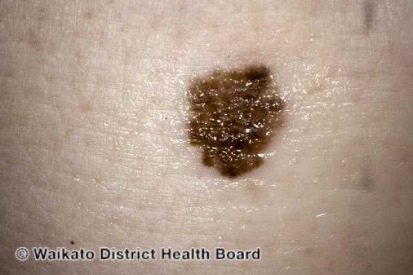
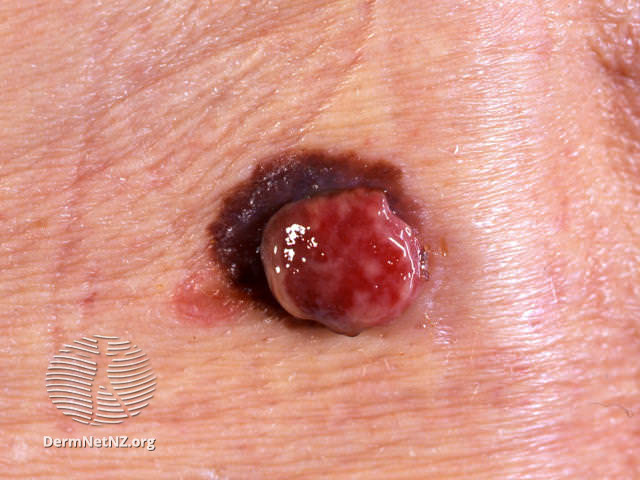
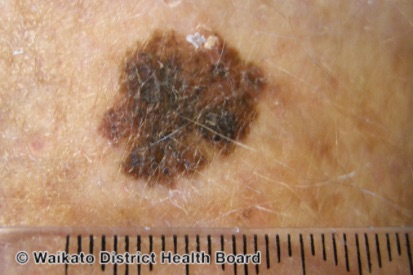
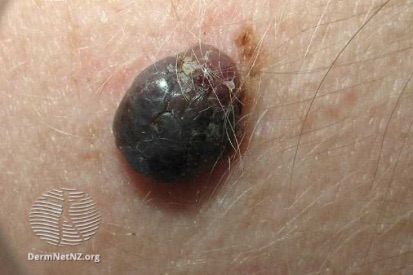
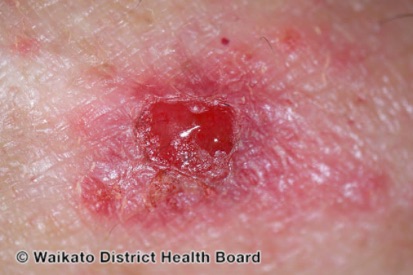
Symptoms of Melanoma
- Melanoma most often presents itself with the change of an existing mole, including change of symmetry, color, or shape.
- Irregular mole borders – scalloped, wavy, or notched.
- Diameter - anything new growing in size.
- Moles that itch, ooze or bleed.
- Melanoma can appear on normal skin tissue and does not always start as a mole.
What Causes Melanoma?
- Melanoma is primarily caused by the uncontrolled growth of pigment-producing cells (melanocytes) in the skin.
- Melanoma is often triggered by exposure to ultraviolet (UV) radiation from sunlight or tanning beds.
- Genetic factors and a history of severe sunburns also contribute to the development of melanoma.
How to Prevent Melanoma
Melanoma FAQs
The primary cause of melanoma is exposure to ultraviolet (UV) radiation, either from sunlight or tanning beds. Other risk factors include having fair skin, a history of sunburns, numerous moles, a family history of melanoma, and a weakened immune system.
Diagnosis involves a biopsy, where a sample of the suspicious area is removed and examined under a microscope. Dermatologists may use the ABCDE rule (Asymmetry, Border irregularity, Color variations, Diameter larger than 6mm, Evolution or change) to assess whether a mole may be melanoma.
Melanoma is staged from 0 to IV, with stage 0 being melanoma in situ (confined to the top layer of skin) and stage IV indicating the cancer has spread to other organs. Staging helps determine the extent of the disease and guides treatment decisions.
Treatment options for melanoma depend on the stage of the cancer and may include surgical excision, lymph node removal, immunotherapy, targeted therapy, radiation therapy, or chemotherapy. The choice of treatment is individualized based on factors such as the patient's overall health and the characteristics of the melanoma.
A skin check performed by a dermatologist involves a thorough examination of the skin to identify any abnormalities, including moles, lesions, or other signs of skin conditions or skin cancer. This examination may be part of a routine check-up or may be prompted by specific concerns. The dermatologist assesses the size, shape, color, and texture of moles, and may perform additional tests or biopsies if necessary for further evaluation. Regular skin checks are essential for early detection and management of skin issues, and, skin cancer.
You should apply sunscreen every day, regardless of weather. Even on cloudy days and during the winter, UV rays can still penetrate the clouds and cause skin damage. Sunscreen needs time to be absorbed into the skin. Apply it at least 15-30 minutes before going outdoors and reapply every two hours.
From our QualDerm Family of Brands: Melanoma Treatment Options
Melanoma Treatment Options
We will confirm melanoma through a biopsy and pathological examination and then treat appropriately.
Treatment options for melanoma provided by a dermatologist may include surgical procedures to remove the cancerous tissue, such as excision or Mohs surgery. Additionally, your dermatologist may recommend therapies like immunotherapy, targeted therapy, or chemotherapy, depending on the stage and characteristics of the melanoma. Close monitoring, regular skin checks, and collaboration with other specialists ensure effective treatment and reduce the risk of recurrence.
If you notice unusual growths on your skin as mentioned above, we highly recommend scheduling an appointment with one of our providers. Annual skin checks are essential for early detection.
Early detection and treatment are crucial elements of comprehensive skin cancer care.
Featured Blogs
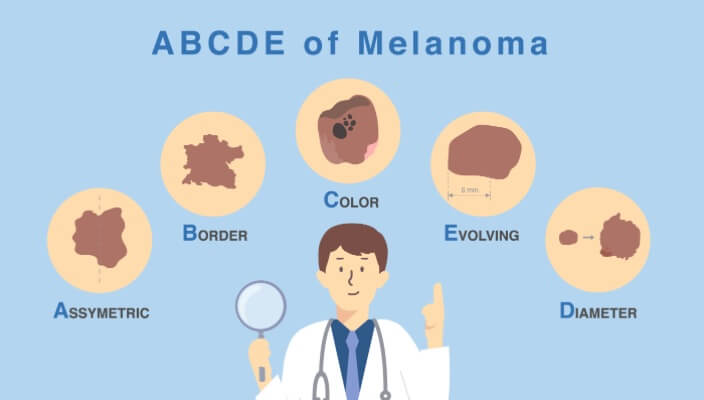
- Skin Cancer
- Skin Exams
Discover the ABCDEs of melanoma. Familiarize yourself with the five key indicators to aid in early detection and prompt medical attention for any suspicious moles or skin lesions.
Read More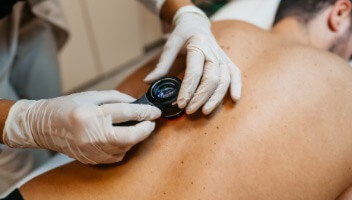
- Skin Cancer
- Skin Exams
In this blog, we’re covering what you need to know about five dangerous skin cancers, including basal cell carcinoma (BCC), squamous cell carcinoma (SCC), malignant melanoma, merkel cell carcinoma, and kaposi sarcoma.
Read More
- Skin Cancer
- Sun Safety
- Skin Care
If you’re unsure of how to effectively apply sunscreen, we’re here to help. Read our guide on when to apply it, how much sunscreen you should wear, how often to reapply, and more.
Read MoreFeatured Products for Sun Protection
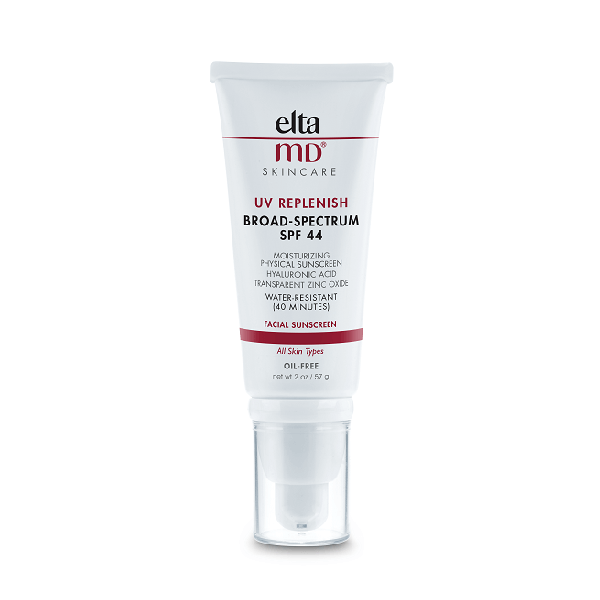
EltaMD UV Replenish SPF 44
UV Replenish Broad-Spectrum SPF 44 is a 100% physical actives sunscreen that restores moisture to dry, stressed skin. Formulated with chemical-free active ingredients, it provides gentle yet effective sun protection. UV Replenish infuses the skin with hyaluronic acid that helps retain more than 1,000 times its weight in water within skin cells. Antioxidant activity further works to combat skin-aging free radicals associated with ultraviolet (UV) and infrared radiation (IR). It offers high-energy visible (HEV) light protection. This oil-free sunscreen feels weightless on the skin. Ideal for daily and active wear, it may be used by all skin types and after treatments as directed by a skin care professional. 2 oz
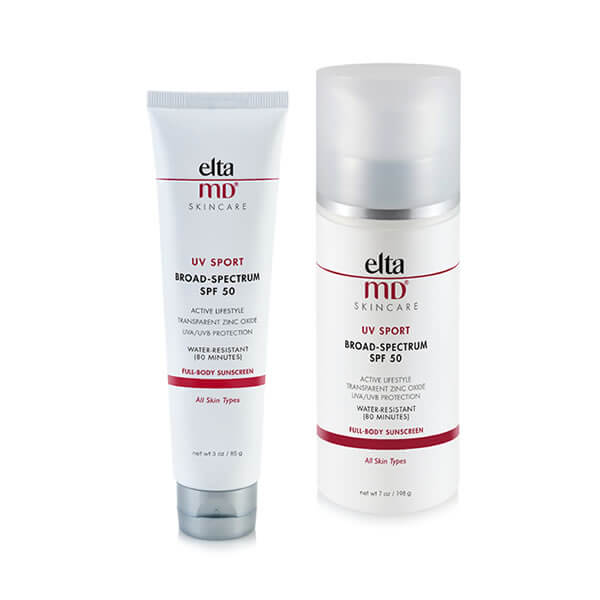
EltaMD UV Sport SPF 50 3oz, 7 oz
Have your fun in the sun – but play it safe. This sunscreen is great for swimmers, skiers, runners, golfers and other athletes – or for those who just love to be outdoors! UV Sport is water-resistant, so it won’t rinse off in water or drip into your eyes and sting when you sweat.
